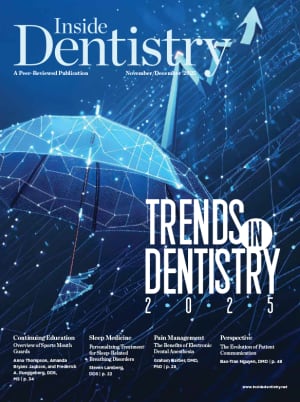A pathogenic oral bacterium could play a role in the development of atrial fibrosis and fibrillation, according to a new study.
The incidence of atrial fibrillation nearly doubled between 2010 and 2019. Prior research has identified a potential correlation between the presence of periodontitis and the likelihood of developing atrial fibrillation. However, researchers have been unable to uncover the mechanisms leading to atrial fibrillation among patients with the oral disease.R
Researchers from Hiroshima University analyzed the relationship between the atrial translocation of Porphyromonas gingivalis, atrial fibrosis, and atrial fibrillation. They used 13-week-old male C57BL/6J mice that had molars infected with P gingivalis and loop-mediated isothermal amplification to assess the bacteria’s presence in the left atrium. They further collected samples from the left atrial appendages of 68 patients with atrial fibrillation who underwent periodontal examinations prior to their procedures—and used polymerase chain reaction to determine the bacterial number of P gingivalis.
Among the mice, the researchers observed the translocation of P gingivalis from the oral cavity to the left atrium through the circulatory system. The mice also demonstrated a higher level of atrial fibrosis (21.9% vs 16.3%) and atrial inducibility (30% vs 5%,) compared with control mice. The researchers suggested that P gingivalis not only instigated heart damage but may also accelerated its progression. In human atrial tissue, the bacterial number of P gingivalis was positively correlated with the periodontal epithelial surface area (ρ = 0.35), periodontal inflamed surface area (ρ = 0.52), and degree of atrial fibrosis (ρ = 0.38).
The findings indicate that periodontitis could be a driver of atrial fibrosis and fibrillation and that effective oral hygiene habits can prevent both oral health issues and cardiovascular diseases. The researchers proposed that periodontitis-associated pathogenic bacteria may be capable of entering the bloodstream to access the heart, altering the organ’s architecture, interfering with electrical signals, and promoting the formation of scar tissue. The results of their study could illuminate a pathway contributing to the pathogenesis of the arrhythmia.
Source: Circulation
